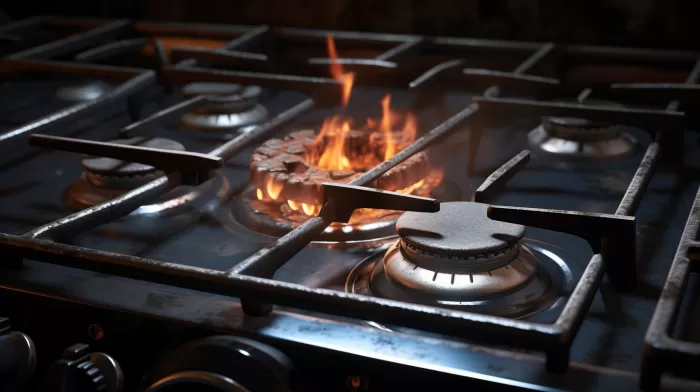Cooking at home is a favorite pastime for many, but did you know that using certain types of stoves could put your family’s health at risk? Many Americans are unknowingly using improperly vented gas stoves, and studies show a strong link between poor ventilation and increased risk of asthma, asthmatic symptoms, and chronic bronchitis.
The Research
A study conducted at Oregon State University found that in homes where a gas stove was used without venting, the prevalence of asthma and wheezing was significantly higher compared to homes with properly vented gas stoves. Though the research has not proven gas stoves’ direct causation for respiratory problems, it does highlight the strong correlation between poor ventilation and respiratory issues.
Asthma is an increasingly common health problem among children, and almost 50% of American families use gas stoves for cooking. These stoves have been shown to increase indoor pollutants, and several ongoing studies are investigating the relationship between these pollutants and lung issues.
Ventilation Matters
The key takeaway from the study was the importance of proper ventilation when using gas stoves. According to researcher Ellen Smit, “Parents of all children should use ventilation while using a gas stove.”
The research found that children living in homes where gas stoves had proper exhaust systems were 32% less likely to suffer from asthma compared to those living in homes with unvented stoves. Additionally, these children experienced a 38% reduced risk of bronchitis and a 39% reduced risk of wheezing.
The Impact of Asthma
Asthma is one of the most common diseases affecting children in the United States. Environmental epidemiologist and researcher Molly Kile states that “reducing exposure to environmental factors that can exacerbate asthma can help improve the quality of life for people with this condition.”
Asthma is a chronic condition that affects the airways, causing them to become inflamed and narrow. This inflammation can make breathing difficult and trigger symptoms such as wheezing, coughing, and shortness of breath. Asthma attacks can be triggered by a variety of factors, including indoor and outdoor allergens, respiratory infections, cold air, exercise, and exposure to irritants like cigarette smoke and air pollution.
How to Protect Your Family
Given the connection between gas stoves and respiratory issues, it’s essential to take the necessary precautions to protect your family’s health. Some tips for improving ventilation when using a gas stove include:
- Install a range hood: A range hood is a vented, fan-assisted device installed above the cooktop to remove smoke, steam, heat, and odors. Look for a hood with a capacity of 100 cubic feet per minute (CFM) for every foot of stove width to ensure adequate air movement.
-
Use the fan while cooking: Always turn on the fan when using a gas stove to help clear out pollutants and reduce the risk of respiratory issues.
-
Clean the filters regularly: Make sure the filters in your range hood are clean and functioning correctly. Dirty filters can reduce the efficiency of your ventilation system.
-
Open windows: Whenever possible, open windows and doors to increase airflow and reduce the concentration of pollutants in your home.
-
Maintain your stove: Perform regular check-ups on your gas stove to ensure it is functioning correctly and not leaking harmful gases. Schedule professional inspections and maintenance as needed.
Conclusion
Proper ventilation when using a gas stove is crucial to protect your family’s health and reduce the risk of asthma and other respiratory issues. By taking these simple steps, you can ensure a safer and healthier cooking environment for you and your loved ones.



